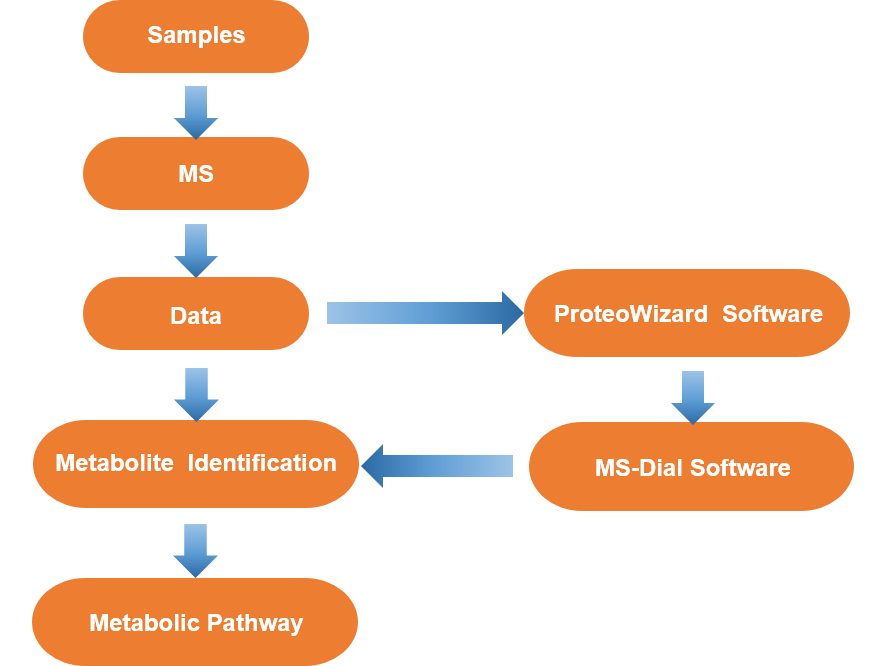Metabolites refer to all metabolites of a certain organism or cell during a specific physiological period. Metabonomics research is the simultaneous qualitative and quantitative analysis of all low-molecular-weight metabolites. One of the central challenges to metabolomics is metabolite identification. To improve the efficiency of metabolite identification for a large number of metabolites, we focus on the advances in the developments of new technologies and better methodologies on metabolite identification.
Technological Advances for Metabolite Identification
Due to the complexity and the dynamic nature of the metabolome, multiple analytical platforms are needed to cover the full spectrum of metabolites, mass spectrometry (MS) and nuclear magnetic resonance (NMR) spectroscopy are the most commonly employed.
Mass Spectrometry (MS)
MS offers quantitative analysis of the metabolites and potential to identify metabolites. Over the past decade, improvements in sensitivity, resolution, accuracy, speed and reliability have been driven by a culture of competitiveness among MS manufacturers and an insatiable demand for better MS instruments among scientists. For small-molecule studies, accuracy and resolution are particularly important for metabolite identification. Essentially, metabolic fingerprinting involves comparing the mass spectrum peaks of metabolites in different individuals and understanding the structure of different compounds and establishing a complete set of analysis methods to identify the characteristics of these different compounds.
 Figure 1. The workflow of metabolite identification.
Figure 1. The workflow of metabolite identification.
Nuclear Magnetic Resonance (NMR)
NMR spectroscopy has played a central role in our understanding of compound diversity. It is non-destructive to the sample and non-biased in the measurement. It is suitable for liquid samples such as blood and urine, as well as solid samples such as tissues and organs.
The Application of Metabolite Identification
Clinical application
Metabolomics is similar to clinical chemistry and compared to genomics, it provides less personal information, so its clinical application may have a certain impact. Lower cost is another reason that makes metabolomics more clinically acceptable.
Disease diagnosis
Metabolomics and physiology are more closely linked. Diseases lead to changes in the body’s pathophysiological processes, and ultimately lead to corresponding changes in metabolites. By analyzing certain metabolites and comparing them with healthy metabolites and searching for disease biomarkers will provide a better disease diagnosis method. The current metabolomics research has been able to diagnose some metabolic diseases, such as diabetes, obesity, and metabolic syndrome.
Conclusion
Given the chemical diversity of most metabolomes and the characteristics of most metabolomic data, researchers can judge whether the human body is in a normal state through in-depth study of the body's metabolites, but studies on genes or proteins cannot reach such a conclusion. Consequently, a great deal of effort in metabolomics over the past decade has been focused on making metabolite identification better, faster, and cheaper. The research could provide more in-depth insights into drug development and would be fundamental for further revealing the mechanism of disease. Base on the metabolic discovery, we can speculate the similar compounds in vivo and establish a sensitive and reliable method for exploration and identification.
References
- Li L, Hao B, Zhang Y. et al.; Metabolite Profiling and Distribution of Militarine in Rats Using UPLC-Q-TOF-MS/MS. Molecules, 2020, 25(5): 1082.
- Xiao J F, Zhou B. et al.; Metabolite identification and quantitation in LC-MS/MS-based metabolomics. TrAC Trends in Analytical Chemistry, 2012, 32(1): 1-14.